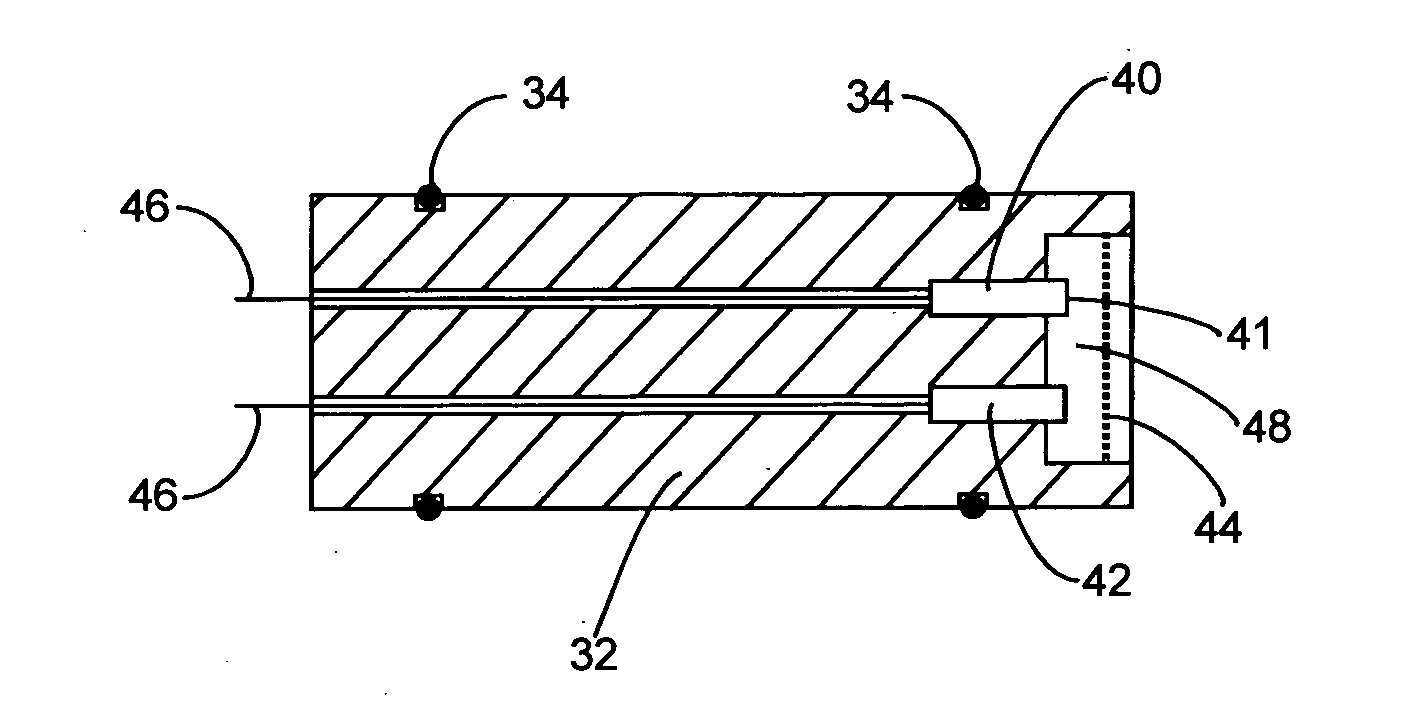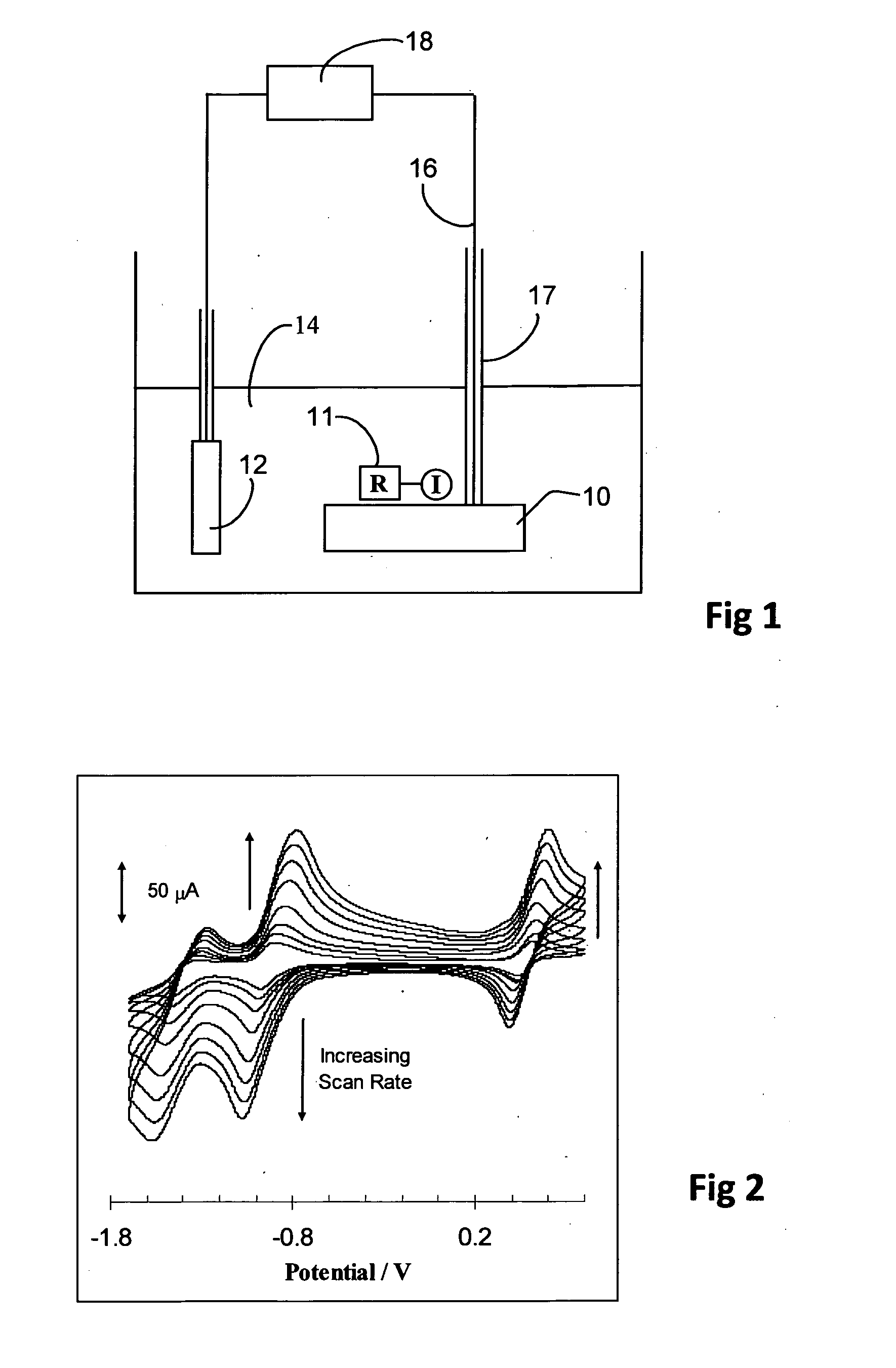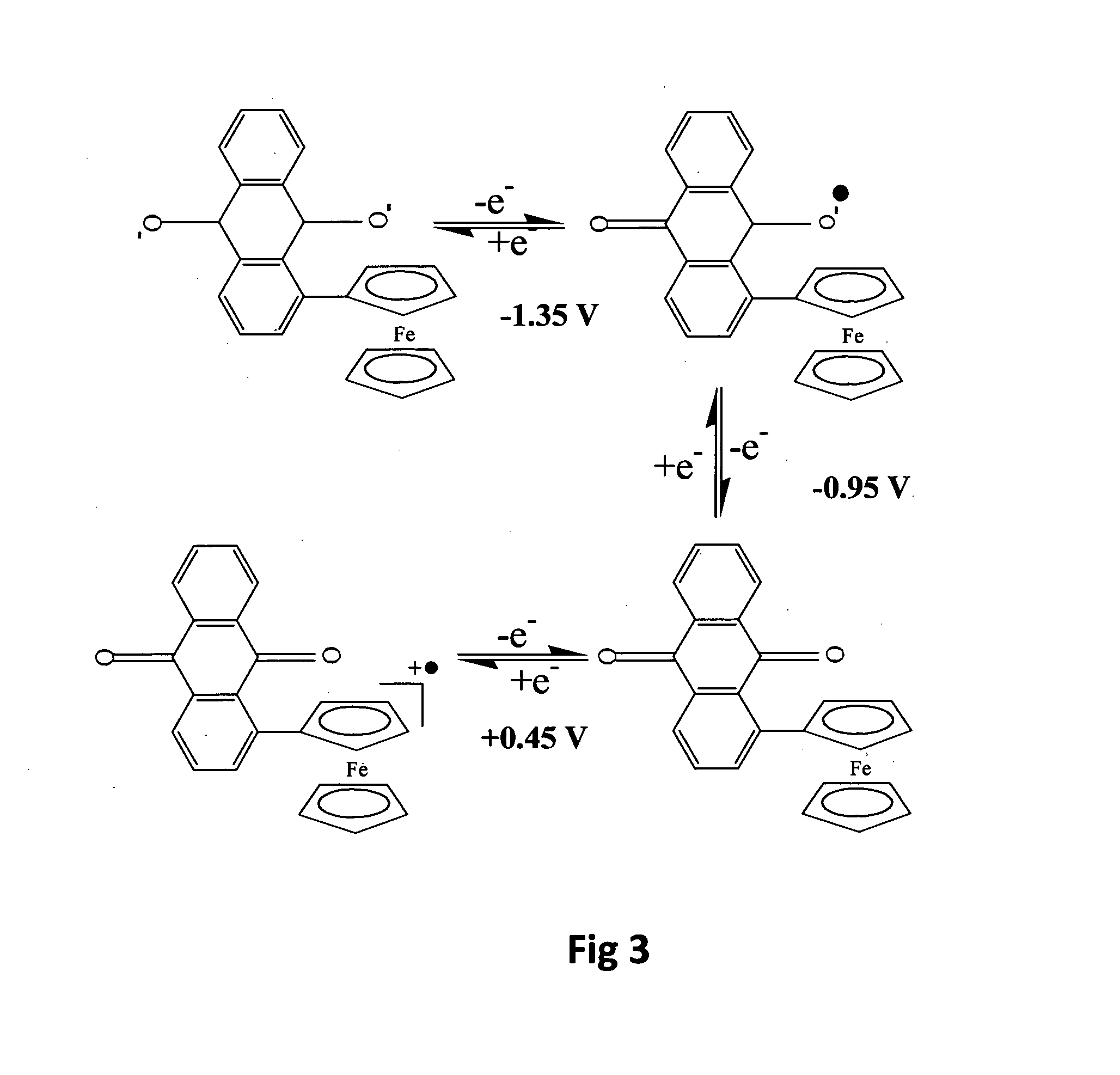Electrochemical sensor utilising a dual redox system contained within a single molecule
a redox system and sensor technology, applied in the field of electrochemical sensors, can solve the problems of loss of physical stability, profoundly detrimental to the ability of a polymer, and interference with the redox reaction reversibility,
- Summary
- Abstract
- Description
- Claims
- Application Information
AI Technical Summary
Benefits of technology
Problems solved by technology
Method used
Image
Examples
example 1
[0072]In this example the redox systems are ferrocene and anthraquinone, in a compound which is anthraquinonyl ferrocene (alternatively named ferrocenyl anthraquinone) denoted here as Aq-Fc. This compound has been reported in the literature: see Roberts R M G Journal of Organometallic Chemistry vol 388 page 181 (1990) which gives a preparation procedure and properties of the compound.
[0073]A similar preparation procedure was used here: to a solution of ferrocene (1 g, 4.23 mmol) in dry diethyl ether (30 ml) was added portionwise Fast Red AL Salt, which is anthraquinone-1-diazonium chloride (1.2 g, 4.43 mmol). The solution was stirred under a nitrogen atmosphere for 48 hours at ambient temperature of 20-25° C. Water (50 ml) was added to this solution and the organic phase was separated and dried over dry MgSO4. The solvent was then evaporated under vacuum and the residue was purified on a basic alumina chromatography column using a gradient of light alkanes (boiling range 40-60° C.) ...
example 2
[0082]In this example the redox systems are ferrocene and hydroxylaminobenzene, in a single multi-redox compound which is hydroxylaminophenyl ferrocene. This compound is believed to be novel.
[0083]To a solution of ferrocene (2 g, 10 mmol) in dry diethyl ether (50 ml) was added slowly nitrobenzene diazonium tetrafluoroborate (3.55 g, 15 mmol) under a flux of nitrogen. The solution was stirred at room temperature for 16 h. Water was added to the solution and the ether phase was separated and washed with water and brine (50 ml). The organic phase was then dried over magnesium sulfate and the solvent evaporated under vacuum. The residue was the purified on a basic alumina chromatography column using a gradient of light alkanes (boiling range 40-60° C.) and diethyl ether as eluent to give the desired compound p-nitrophenyl ferrocene:
[0084]This product was obtained as a purple solid in 35% yield.
[0085]The compound was examined by nmr and the following peaks were observed:
[0086]1H NMR (400...
example 3
[0093]p-nitrophenyl t-butylferrocene (which is believed to be novel) was made from t-butylferrocene by the same procedure as in Example 2. The product was a mixture of two isomers:
[0094]As shown by the structures represented above, in one isomer, designated β, the p-nitrophenyl and t-butyl groups were on the same cyclopentadienyl ring of ferrocene. In the other isomer, which designated the I′ isomer and which was present in a greater amount, they were on different rings. The mixture was a purple solid and the two isomers could not be separated by column chromatography. Examination by nmr led to observation of the following peaks:
[0095]1H NMR. (400 MHz, CDCl3) δ 8.13 (2H, d, J=8.50 Hz, o-H—ArNO2), 7.55 (2H, d, J=8.50 Hz, m-H—ArNO2),
[0096]isomer β: δ 4.68 (1H, m, H-Cp), 4.64 (1H, m, H-Cp), 4.36 (1H, m, Cp), 4.01 (5H, m, H-Cp′), 1.28 (CCH3);
[0097]isomer 1′: δ 4.73 (o-H-Cp-Ar), 4.47 (m-H-Cp-Ar), 3.91 (H-Cp′); 3.88 (H-cp′), 1.16 (CCH3);
[0098]13C NMR (100 MHz, CDCl3)
[0099]isomer β: δ 148....
PUM
| Property | Measurement | Unit |
|---|---|---|
| concentration | aaaaa | aaaaa |
| structure | aaaaa | aaaaa |
| voltage | aaaaa | aaaaa |
Abstract
Description
Claims
Application Information
 Login to View More
Login to View More - R&D
- Intellectual Property
- Life Sciences
- Materials
- Tech Scout
- Unparalleled Data Quality
- Higher Quality Content
- 60% Fewer Hallucinations
Browse by: Latest US Patents, China's latest patents, Technical Efficacy Thesaurus, Application Domain, Technology Topic, Popular Technical Reports.
© 2025 PatSnap. All rights reserved.Legal|Privacy policy|Modern Slavery Act Transparency Statement|Sitemap|About US| Contact US: help@patsnap.com



